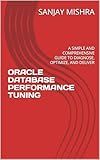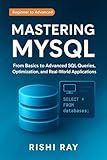Best Database Optimization Tools to Buy in December 2025

Database Systems: Design, Implementation, & Management



ORACLE DATABASE PERFORMANCE TUNING: A CHECKLIST APPROACH WITH SIMPLE AND COMPREHENSIVE GUIDE TO DIAGNOSE, OPTIMIZE, AND DELIVER



Database Systems: Design, Implementation, & Management



FinOps for Snowflake: A Guide to Cloud Financial Optimization



The Microsoft SQL Server 2000 Performance Optimization and Tuning Handbook



Database Systems: Design, Implementation, & Management



Modern Optimization with R (Use R!)



Mastering Vector Databases: The Future of Data Retrieval and AI



Sequential and Parallel Algorithms and Data Structures: The Basic Toolbox



Mastering MySQL: The Complete Guide to Database Management and Optimization: From Beginner to Advanced SQL Queries, Database Design, and Performance ... From Beginner to Full-Stack Mastery Book 5)


To find missing index details of a database in PostgreSQL, you can use the built-in query planner called EXPLAIN. This tool can provide information on how queries are being executed, including whether indexes are being used effectively. By running queries with EXPLAIN, you can analyze the query plan and identify any missing indexes that could improve performance. Additionally, you can use the pg_stat_user_indexes system view to check for missing indexes on specific tables in your database. This view provides information on the indexes that have been created and which ones are being used. By analyzing this view, you can determine which tables may benefit from additional indexes to optimize query performance.
How to identify missing indexes in PostgreSQL?
One way to identify missing indexes in PostgreSQL is to use the pg_stat_user_indexes and pg_stat_user_tables system views. These views provide information on the number of rows in each table and the number of times an index has been scanned.
Here is a query that can help identify missing indexes:
SELECT relname AS table_name, indexrelname AS index_name, idx_scan AS number_of_scans, idx_tup_read AS tuples_read, idx_tup_fetch AS tuples_fetched FROM pg_stat_user_indexes JOIN pg_index ON pg_index.indexrelid = pg_stat_user_indexes.indexrelid JOIN pg_class ON pg_class.oid = pg_stat_user_indexes.relid WHERE pg_class.relname NOT LIKE 'pg_%' AND idx_scan = 0 ORDER BY idx_scan;
This query will return a list of tables and associated indexes that have not been scanned yet. These indexes may be candidates for creation to improve query performance.
Additionally, tools like pgBadger or pg_hint_plan can also help identify queries that could benefit from additional indexes.
What is the algorithm used to find missing index details in a PostgreSQL database?
The algorithm used to find missing index details in a PostgreSQL database typically involves querying the system catalog tables to check for existing indexes on a table and comparing them against the expected or recommended indexes based on the table's query patterns and performance requirements.
Here is a general outline of the algorithm:
- Connect to the PostgreSQL database using a SQL client or command line tool.
- Query the system catalog tables to retrieve information about existing indexes on a table. The main catalog tables to query are pg_indexes, pg_class, and pg_index.
- Analyze the query patterns and performance requirements of the table to determine the expected or recommended indexes that are missing.
- Compare the existing indexes with the expected indexes to identify any missing indexes.
- Generate and execute the SQL statements to create the missing indexes.
- Monitor the performance of the database after creating the missing indexes to ensure that they improve query performance as expected.
It is important to note that creating indexes should be done carefully and after analyzing the impact on the overall performance of the database. Creating unnecessary indexes can also have a negative impact on database performance.
How to utilize execution statistics to identify missing indexes in PostgreSQL?
One way to use execution statistics to identify missing indexes in PostgreSQL is by analyzing query performance using the pg_stat_statements module. This module provides detailed statistics on queries executed, including the total time taken, number of rows fetched, and number of times a query has been executed.
Here are the steps to identify missing indexes using execution statistics in PostgreSQL:
- Enable the pg_stat_statements module in your PostgreSQL database by adding the following line to your postgresql.conf file:
shared_preload_libraries = 'pg_stat_statements' pg_stat_statements.max = 10000 pg_stat_statements.track = all
- Restart your PostgreSQL server to apply the changes.
- Execute a set of representative queries in your application to populate the pg_stat_statements view with data.
- Query the pg_stat_statements view to analyze the performance of the executed queries:
SELECT * FROM pg_stat_statements ORDER BY total_time DESC;
- Look for queries that have a high total_time and a large number of rows fetched but do not have any indexes on the accessed tables. These are potential candidates for missing indexes.
- Use the EXPLAIN command to analyze the execution plan of the query:
EXPLAIN SELECT * FROM table_name WHERE column_name = 'value';
- Look for sequential scans (Seq Scan) in the execution plan, as this indicates that PostgreSQL is scanning the entire table to find the desired rows. This can be a sign that an index is missing.
- Create an index on the column used in the WHERE clause of the query:
CREATE INDEX index_name ON table_name (column_name);
- Re-run the query and monitor the performance to see if the index has improved the query execution time.
By following these steps, you can use execution statistics to identify queries that may benefit from missing indexes in PostgreSQL and optimize the performance of your database.
What is the importance of finding missing index details in PostgreSQL?
Finding missing index details in PostgreSQL is important for optimizing query performance. By analyzing the queries that are being run on the database and identifying any missing indexes, database administrators can improve the efficiency of query execution and reduce the time it takes to retrieve data from the database.
Missing indexes can lead to slow query performance, as the database engine must scan through large amounts of data to find the required information. By adding indexes to the appropriate columns or tables, queries can be executed more quickly and efficiently, resulting in better overall performance for the database as a whole.
Additionally, finding missing index details can help improve the overall health and stability of the database system. By identifying and addressing any performance issues related to missing indexes, administrators can ensure that the database is running smoothly and efficiently, and prevent potential bottlenecks or slowdowns in the future.
How to address missing indexes in a high-transaction PostgreSQL environment?
To address missing indexes in a high-transaction PostgreSQL environment, you can follow these steps:
- Identify the missing indexes: Use the PostgreSQL query planner to identify queries that are performing full table scans or using inefficient indexes. You can use tools like EXPLAIN ANALYZE to analyze query plans and identify which indexes are missing.
- Create missing indexes: Once you have identified the queries that need optimization, create the missing indexes using the CREATE INDEX statement. Make sure to create indexes on columns that are frequently queried and filtered on.
- Monitor performance: After creating the missing indexes, monitor the performance of your queries to see if there is an improvement. Use tools like pg_stat_statements to track query execution times and identify any bottlenecks that may still exist.
- Optimize existing indexes: In addition to creating missing indexes, you may also need to optimize existing indexes to improve query performance. Consider adjusting index parameters such as fillfactor and selectivity to better suit the workload of your environment.
- Regularly review and maintain indexes: Keep track of your database performance over time and regularly review your indexes to ensure they are still optimized for your workload. Consider re-analyzing and reindexing tables periodically to maintain optimal performance.
By following these steps, you can effectively address missing indexes in a high-transaction PostgreSQL environment and improve the overall performance of your database queries.
